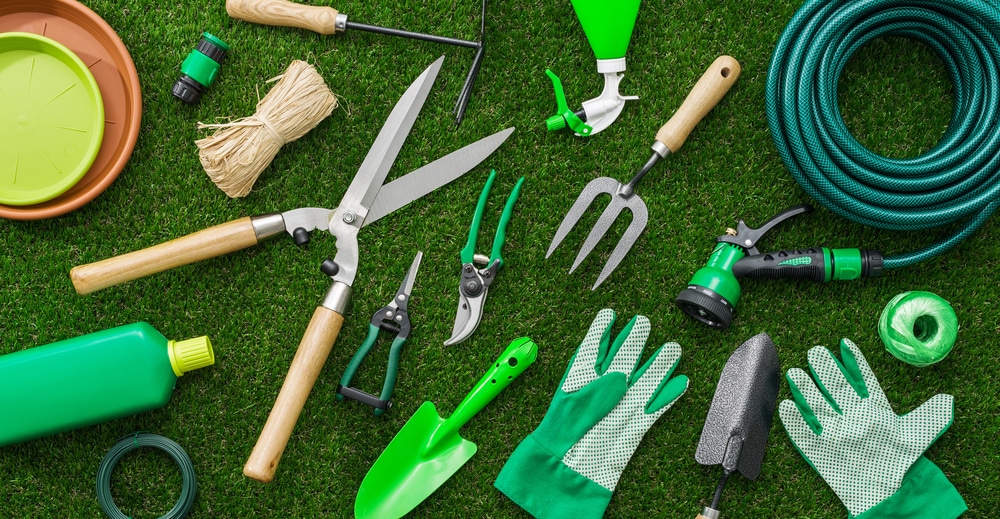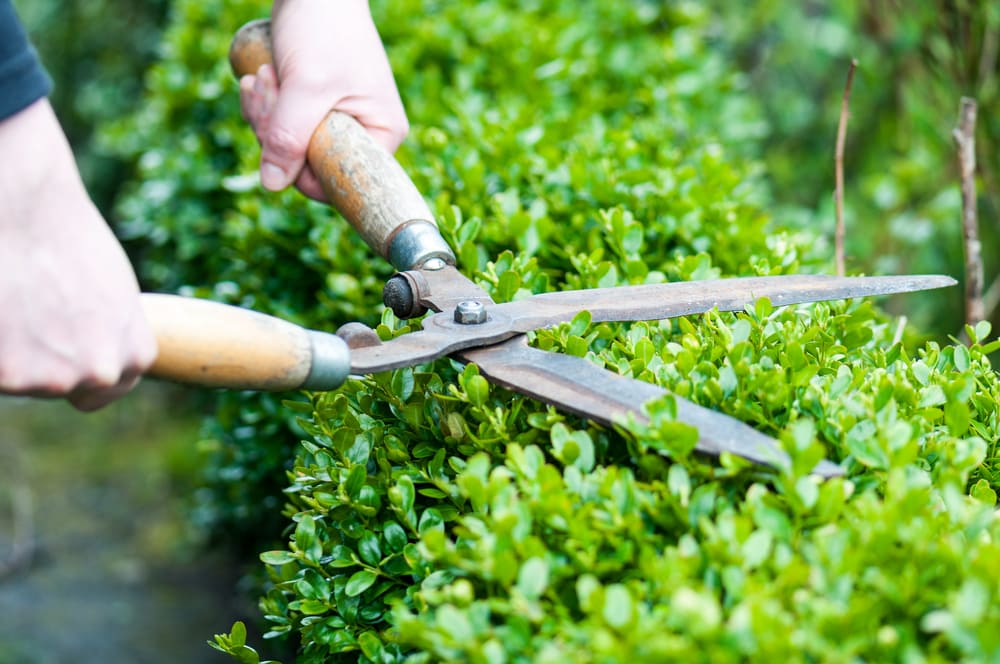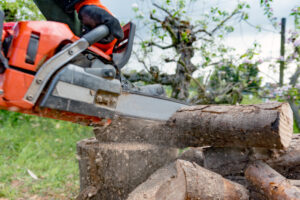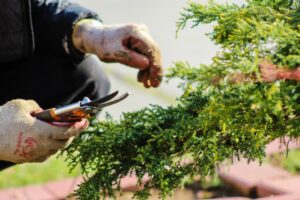Planting a hedge outside a garden gives it both a beautiful appearance and a sense of structure. They enhance the aesthetic appeal and monetary value of any property. They must be watered and trimmed regularly, just like any other plant, which is part of its required maintenance. If you cut them regularly as they grow, you can keep them looking clean and in good form.
It is necessary to do periodic pruning on all shrubs to maintain their tidy appearance, eliminate any dead branches, open up the internal space for improved air circulation, and stimulate more vigorous new growth.
Most shrubs, namely those that do not have evergreen needles, are best pruned using a method that involves removing branches one at a time using a sharpened pair of pruners. Let's delve deeper into this topic of discussion!
What are the Essential Tools for Trimming and Pruning?
The maintenance of healthy growth can be accomplished by pruning shrubs and hedges. Our commercial customers frequently want us to prune their trees so that they can make their properties more desirable to prospective buyers. Having a better appearance is typically related to having a greater number of visits.
Removing green sprouts is typically the primary focus of professionals, as this practice encourages overall healthy growth. The shrub's appearance can be improved, in addition to contributing to its growth, by having it trimmed.
During the trimming process, trimmers, shears, and saws are utilised, which ultimately results in more productive outputs and healthier development.
Hedge Shears
Shears designed specifically for cutting hedges and bushes are known as hedge shears. Manual and powered iterations of shears are included in the product catalogue. Mechanical hedge shears are multi-purpose tools that can be used to cut weeds, overgrown grass, bushes, and shrubs, as well as shape shrubs.
Hedge Trimmer
Power hedge pruners have a motor that is powered by either gas, electricity, or batteries, and it has a long, toothed blade called a cutting bar that is capable of cutting in both directions. To trim shrubs, turn on the trimmer, and while it is running, move the cutting bar over the shrub in a calm and steady motion.
Power Saw
There is a wide variety of power saws accessible on the market; however, the sort that must be utilised depends on the dimensions of your outside space, whether it is a garden or backyard. Saws such as rope saws (with cutting blades), chainsaws and reciprocating saws are all available for use while pruning bushes or trees.
Shears, whether lopping shears or hand shears, are regularly used for pruning, and these shears are typically strong enough to sever even the tiniest branches. When it comes to pruning, shears are frequently utilised. When working with thick branches, you might need a saw. The following is a list of the greatest tools available for pruning:
- Secateurs – When it comes to cutting plants back and pruning them, hand pruners or bypass secateurs with a scissor-action are ideal all-around choices. They are perfect for cutting through even the most delicate stems that are as thick as a pencil.
- Pruning saw – Trimming saws come in a variety of sizes and have the ability to saw through branches that are up to five centimetres thick. However, many only cut on the draw stroke, even though many of them contain coarsely angled blades that cut on both the pull and push strokes.
- Long-reach pruner – A pair of secateurs mounted on a long pole is comparable to pruners with a long reach. To operate either a rope or a lever, the free end of the respective device is pulled. They are suited for cutting through woody branches up to 3 centimetres thick on big trees or large shrubs on a routine basis.
- Loppers – These shears have large handles that provide strong leverage and heavy-duty blades that can cut stems of woody plants that are up to three centimetres thick. They are an excellent choice for tasks that involve a significant amount of labour, such as trimming. Some of them have ratchet systems and extendable handles, which make it much easier to cut things.
- Hedge Shears – If you have hedges, small shrubs, or evergreens or need to deadhead perennials, hedge shears are great. Any hedge shrub can be utilised with them, and they can chop branches up to 14 inches thick.
Cutting hedges for the first time
Hedge pruning should start as soon as the hedge has been planted, especially with flowering shrubs and robust non-flowering ones (hawthorn and privet). Cut the plants' height by roughly one-third. For young plants, this may sound severe, but if you don't, the base of your hedge will always be sparse and overgrown with weeds.
The next autumn, prune the new growth in half and trim the side shoots of the hedge to the desired width. After planting, it's best to avoid pruning evergreens and slowly growing deciduous trees (such as beech and hornbeam). While leaving leading shoots to grow, trim-side shoots by a third. Hold your nerve even though the hedge will appear frail. When the plants are a few inches above the desired height for the hedge, cut them back. The hedge will swiftly fill out as a result of this, stimulating many side shoots.

When to Trim Hedges
During the first several years after planting, new hedges should receive formative trimming. This is carried out to give it shape and guarantee healthy growth. Once the hedge is developed, it needs to be properly maintained daily.
Hedge pruning depends on the species and the time of year. Late in the winter, when the plant is dormant, they are trimmed. Additionally, it's crucial to keep in mind not to trim earlier in the year to prevent disturbing bird nests.
How to Correctly Trim Hedges
Create some interesting forms with your hedge trimmings. To accomplish this, you should begin by cutting away the thicker branches that are jutting out. Continue with the fine pruning to maintain the hedge's neat appearance and good form. In an ideal situation, the base of the sides of a hedge is trimmed to be broader so that light from the sun may reach the leaves that are closer to the ground.
The side hedges that are chest-high should be trimmed first. Hedgerows that are chest-high should be trimmed by cutting the sides vertically with a sweeping motion that is formed like an arc. Beginning in the back, work your way forward. After that, you should trim the top of the hedge. To accomplish this, hold the cutter bar horizontally while maintaining a little inclination of 10 degrees.
First, you should trim the top of tall hedges. Try cutting the head of the hedges with the appropriate cutter, angled at a little 10-degree angle, and then begin cutting. Continue with the process of cutting the sides of the hedges.
Hedgerows must be properly maintained to retain their dense appearance and aesthetic appeal. They occasionally require fertiliser to provide them with the energy they need to continue growing and accelerate their development. Also, remember that if you find the work of trimming hedges to be practically hard, you can always hire professionals to assist you in doing so.
Renovating old hedges
Old hedges, especially privet hedges, might start to look naked in certain areas and will need to be rejuvenated when this happens. Hedgerows that have been neglected for an extended period of time could need to have their height and width reduced. Because the privet is a semi-evergreen plant, it is normal for it to shed part of its leaves when the weather turns cold.
However, if you see that many of the spots on your privet have twiggy shoots but very few leaves, it is probably better to cut the hedge straight deep into the old branches. Privet reacts well to this and will quickly send up new shoots. These branches can be pruned down every several months to encourage bushing out rather than vertical growth. Yew can also be pruned back to its bare branches, although it is recommended first to trim one part of the hedge, then wait for the new growth to appear on the other side, and finally trim the third side.
Within a few weeks, the old, barren branches will begin to show signs of new growth. These young branches will put on around 20 centimetres of growth in their first year if you provide the hedge with a mulch made of manure or compost and feed it.
Try a metal frame to cut your hedge
Hedge-cutting guides can be purchased in the form of metal frames shaped like anything from sheep to Mickey Mouse. These frames can be used to cut hedges. When the plant has grown to the point where it has passed through the frame, clip it so that it is close to the metal. After a few years have passed, the frame will be completely swallowed up by the shape. Ivy that is pruned in close proximity to wireframes will give the appearance of an immediate topiary. As a guide, you can create geometric shapes such as cubes, cones, and other figures by tying bamboo poles around the plant. Move the frame around from shrub to shrub if you have multiple sections that need to be trimmed to the same form.
A feeling of formality can be easily achieved in even the tiniest of gardens by employing topiary "lollipops." For this purpose, Elaeagnus and hollies are the hardiest of all the plants. The clipped traditional bay is prone to damage from frost, especially in northern countries, and it can soon look scorched and unsightly due to this.
August is the best time to prune Holly and Elaeagnus hedges, but by the time winter comes around, when the sharpness of the balls is most crucial, they have started to generate new growth that is straggly.
At the end of fall, prune away any new growth, but don't cut too deeply because cold might cause damage to the plant. In the spring, take some secateurs and clip the balls into a more compact shape, making sure to cut through the stems rather than the leaves. If your topiary is located at a high elevation, you might need someone to direct you from the ground below. Be careful while you are pruning any type of hedge or topiary. It is preferable to make a second cut instead of waiting for a hedge that was clipped too vigorously to grow back than it is to wait.
When to Prune Shrubs
The type of plant you have will decide the season of the year that is ideal for performing shrub pruning. This is only one of the many reasons why you should be able to recognise the shrubs that are in your yard. A vital aspect of pruning that can be done at any time is the removal of branches that are either dead, damaged, weak, or crossing one another. On the other hand, pruning is accomplished in the fall or early winter, and it can cause damage to a plant, reducing or even eliminating the number of leaves and flowers it produces.
Late Winter/Early Spring
Pruning summer-flowering species that will flower on the new growth of the following season should be done while the plants are still in their dormant state. Their bare limbs reveal the structure of the plant, and the new growth that emerges in the spring will quickly heal any scars. Conifers with random branching should have their branches trimmed once new growth appears.
Here are some of the more well-known ones:
- Gardenia (Gardenia jasminoides)
- Nandina (Nandina domestica)
- Privet (Ligustrum species)
- Repeat-flowering roses (Rosa species)
- Sweetshrub (Calycanthus floridus)
- Beautyberry (Callicarpa species)
- Rose-of-Sharon (Hibiscus syriacus)
- Summersweet (Clethra species)
- Bumald spiraea (Spiraea bumalda)
- Japanese barberry (Berberis thunbergii)
- Butterfly bush (Buddleia davidii)
- Japanese spiraea (Spiraea japonica)
Late Spring/Early Summer
Plants that bloom in the spring should have their branches clipped as soon as the flowers fall off. Because they only produce flowers on old growth from the past period, performing pruning soon after bloom will increase flower production next year.
Here are some of the more well-known ones:
- Common lilac (Syringa vulgaris)
- Rhododendron (Rhododendron species)
- Flowering quince (Chaenomeles species)
- Mock orange (Philadelphus species)
- Azalea (Rhododendron species)
- Forsythia (Forsythia species)
- Japanese kerria (Kerria japonica)
- Bigleaf hydrangea (Hydrangea macrophylla)
- Deutzia (Deutzia species)
- Weigela (Weigela florida)
- Beautybush (Kolkwitzia amabilis)
- Japanese pieris (Pieris japonica)
- Bridal wreath spiraea (Spiraea prunifolia)
Easy steps to perfect shrub
The following are some of the steps involved in using selective pruning to shape up a shrub:
Be aware of what you are cutting back. Identifying the shrub is the first stage in the process since this will allow you to learn about its natural form and qualities. You can get assistance identifying mystery shrubs and developing a pruning strategy from a knowledgeable landscape contractor, as well as from an expert working at a garden centre or botanic garden.
Make precise cuts, but don't go too precise. You should prune each branch such that it is brought back to a branch node, which is the point at which it connects to another branch. Cut immediately above the joint, leaving a stub that is no longer than an eighth of an inch long.
However, take care not to chop through the branch that you intend to save. When you prune in this manner, water and other resources will be redirected to the branches that you preserve. It is important not to make cuts in the middle of two branch nodes or leaf nodes because this may cause the plant to produce ugly fluffs of twigs.
Get rid of the branches that are in disagreement with each other. Examine the areas of the tree where one branch is rubbing against another, bumping into it, or where there will soon be a conflict as both branches continue to grow. Pick one of the branches to keep, which should typically be the one that is growing away from the shrub, and cut the other one away.
Maintain proper proportions. To begin reducing the size of a shrub, first, locate the branches that are the longest. After that, prune each long branch to end at a branch node. The shrub's size can be reduced in this way while maintaining its natural form.
Pause and check. As you prune, take frequent breaks to check your progress and ensure that you are not removing too much of the shrub, that the cuts you make are distributed equally, and that you are maintaining its attractiveness and equilibrium. In any given year, no more than 1/3 of the shrub should be pruned away.
Get rid of any wood that has died. It is not abnormal for a shrub to lose some of its branches and twigs over time. If you make a small scratch in the bark of a branch and look underneath, you won't see any green if the branch has already died. Additionally, deadwood is fragile and breaks with a loud crack when it does. Remove any dead twigs that are closer to the branch that is still alive. If a whole stem is dead, cut it off near the ground where it was attached.
Remove a few of the oldest and biggest stems from the plant. Remove them completely down to the ground level. This will promote new growth, which is typically more robust than older growth. When working with large, aged stems, you might need to use a pruning saw.
Pay attention to the shrub's natural shape. Some types of shrubs have a form similar to a fountain or vase, with arching stems rising upward from the base of the plant. Examples popular in this category include forsythia and bridal veil spiraea. Other types of shrubs, including boxwood and dwarf fothergilla, have a naturally bushy and rounded appearance to their foliage. When pruning a shrub, the goal should be to highlight and enhance its natural shape rather than to alter it.
Too much of what? Try not to freak out. Most shrubs will regrow and grow within a 1 or 2 after being pruned.
What is the 1/3 Rule for Pruning Shrubs?
New, healthy development can be stimulated by doing light pruning on older bushes and trees of a smaller size. Plants maintain a balance between their above-ground and their below-ground components to sustain life. If a sizeable number of stems, particularly those placed at the top of the plant, are removed, the plant will attempt to reestablish equilibrium by putting forth new growth to keep the top flora in a state of harmony.
This regeneration should be encouraged, but only to a certain extent. It is how plants heal themselves, and it is also how pruning can cause latent buds to blossom. On the other hand, a plant will go into a state of shock or panic if it loses an excessive amount of its leafy growth.
At this stage, it may also attempt to reconstruct itself through the growth of suckers or water sprouts, which can cause the plant to appear ragged. Once it has begun, sucking has the propensity to continue for a considerable amount of time.
On the other side, if you prune too little, there won't be much of an influence on the amount of new growth that is stimulated. A light pruning job might help with minor plant shape, but it won't foster new stem growth in the same way as a good 1/3 pruning job will.

Basic Pruning Technique
If you have a small tree or shrub that is well established, you should only need one session of vigorous trimming throughout each growing season. At other times, pruning should be confined to removing branches that are diseased or dead, or it should merely consist of shaping trimming to ensure that hedges remain in the appropriate form.
When it comes to shrubs, the best time to prune them is either late winter or early spring. At this time of year, the plants are still in their dormant state; nevertheless, they are just about to begin to produce new shoots. Leave enough blossoms on the stems of your shrub so that it can be displayed beautifully in the springtime if it flowers in the spring. Some homeowners are reluctant to trim a shrub or tree aggressively; however, you can be confident that an established shrub will rapidly thank you for your efforts by producing lots of new growth that is thick. To get started, take a robust, well-established shrub and cut away any wood that is sick, damaged, or dead. Take down any branches that are crossing each other and scratching the bark.
Hiring a professional or taking care of your plants on your own can protect your family and house from the numerous dangers that come from trees that have not been properly maintained and from unwanted visitors in the shape of insects and other kinds of pests. If you give your trees the attention they need regularly, you won't have to spend a small amount fixing the damage they create, and you won't have to worry about any incidents or health problems. You'll also save money.
What are the Tips for Trimming and Pruning Hedges and Shrubs?
Plants that have been given the appropriate amount of trimming both look nicer and live for a longer period of time. When it comes to pruning and trimming hedges and shrubs correctly, keep these suggestions in mind.
- Get Rid of Bad Branches – When you are shaping shrubs, it is important to keep in mind what some experts refer to as the "4 Ds." To begin, it is important to prune bushes by removing any broken or dead branches, as they distract from the overall beauty of the plant and make it more susceptible to rot and disease. In addition, if you spot any branches that are wilting, withering, or infected, remove them as quickly as possible to stop the illness from spreading.
- One-third of a Bush’s Canes Should be Pruned – Shrubs with canes, such as forsythia and hydrangea, continually produce new canes from their roots annually. To maintain a manageable height for the bush, it is necessary to remove the older, larger wood. During the process of trimming bushes, remove younger canes to reduce the size of the plant's centre, increase the amount of available light, and limit its spread.
- Pruning Flattop Bushes Should be Avoided – When first learning how to trim bushes, it can be tempting to reach for the hedge shears, which are a common tool for this task, and try to shape a shrub by cutting off the tips of its branches. This technique of giving yourself a "flattop haircut" might look nice for up to two years.
- Prune Entire Branches – If they are not trimmed regularly, most shrubs will eventually become overgrown and dense. Even while the leaves may seem to be in good shape this year, it is possible that it will be too enormous to prune back without causing irreparable damage next year.
- Remove a Branch from the Collar – When performing shrub trimming, it is essential to cut or saw branches at the collar, which is located above the point where the branch joins the central trunk. The term "branch collar" refers to the protrusion of bark that can be found all the way around the branch. If you do nothing, the collar will quickly grow over the wound, and it will become invisible. There should be no studs left behind.
- Replace Overgrown Shrubs – It is not a smart option to prune a large shrub to make it fit into a limited space. It is feasible, but it is much easier to remove a shrub that has become overgrown and change it with a new shrub that will grow to a size that is more suitable for the area.
Takeaway
Hedge trimming may be accomplished by virtually anyone with just a little bit of prior knowledge and the appropriate equipment. Before you begin cutting, ensure you trim at the appropriate time of year, that your tools are sharp, and that you frequently step back to assess your progress.
Frequently Asked Questions
Can I trim my shrubs and hedges during the flowering season?
It is generally recommended to avoid trimming shrubs and hedges during their flowering season, as this may remove flower buds and diminish the display. If possible, schedule your pruning before or after the flowering period. However, if your shrubs or hedges require immediate attention, you can trim them during the flowering season, understanding that it may affect the current year's bloom.
Can I trim my shrubs and hedges into elaborate shapes, like topiaries?
Trimming shrubs and hedges into elaborate shapes, such as topiaries, is possible but requires careful planning and maintenance. It's important to choose shrub varieties that are suitable for intricate shaping and have the ability to tolerate regular pruning. Additionally, shaping intricate designs will require precise trimming techniques and frequent maintenance to preserve the desired form. Regular monitoring and pruning will be necessary to maintain the intricate shape over time.
Are there any safety precautions I should take while trimming shrubs and hedges?
Yes, it's essential to take safety precautions while trimming shrubs and hedges. Wear protective gloves and safety glasses to shield your hands and eyes from thorns, debris, or flying particles. If using electric or hedge trimmers, be cautious of the power cord and ensure a secure grip on the tool. When using ladders, make sure they are stable and positioned on level ground. Always follow the manufacturer's instructions for the specific tools you are using and exercise caution to prevent accidents or injuries.
Can I trim the top of my hedges to control their height?
Yes, you can trim the top of your hedges to control their height. This technique is known as "topping" and is commonly used to maintain a specific hedge height. However, it's important to note that excessive topping can lead to an unhealthy and unsightly hedge. It's recommended to trim the sides of the hedge slightly wider than the top, which allows sunlight to reach the lower branches and promotes a more even growth pattern.
Can I trim my shrubs and hedges during the hot summer months?
It's generally best to avoid trimming shrubs and hedges during extremely hot summer months. Trimming during hot weather can stress the plants, especially if they are already experiencing water stress. The best time to trim is during cooler parts of the year, such as spring or early fall when the plants are actively growing and the weather is more moderate. If you must trim during summer, try to do it early in the morning or late in the evening when temperatures are cooler.







